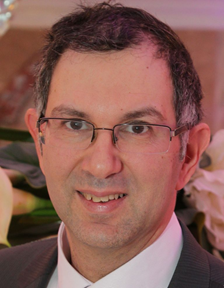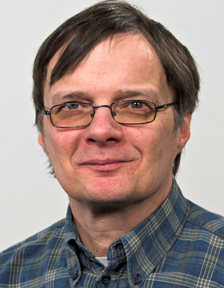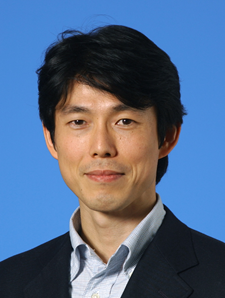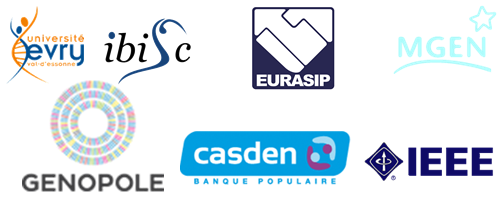
4th International Conference on Image Processing Theory, Tools and Applications
Confirmed Plenary Speakers:
Department:
CEREMADE Laboratory, UMR CNRS 7534,
University Paris Dauphine PSL*,
France
E-mail: Cohen@ceremade.dauphine.fr
Homepage: http://www.ceremade.dauphine.fr/~cohen
Presentation title: Geodesic Methods for Biomedical Image Segmentation
Abstract:
Tubular and tree structures appear very commonly in biomedical images like vessels, microtubules or neuron cells. Minimal paths have been used for long as an interactive tool to segment these structures as cost minimizing curves. The user usually provides start and end points on the image and gets the minimal path as output. These minimal paths correspond to minimal geodesics according to some adapted metric. They are a way to find a (set of) curve(s) globally minimizing the geodesic active contours energy. Finding a geodesic distance can be solved by the Eikonal equation using the fast and efficient Fast Marching method. In the past years we have introduced different extensions of these minimal paths that improve either the interactive aspects or the results. For example, the metric can take into account both scale and orientation of the path. This leads to solving an anisotropic minimal path in a 2D or 3D+radius space. On a different level, the user interaction can be minimized by adding iteratively what we called the keypoints, for example to obtain a closed curve from a single initial point. The result is then a set of minimal paths between pairs of keypoints. This can also be applied to branching structures in both 2D and 3D images. We also proposed different criteria to obtain automatically a set of end points of a tree structure by giving only one starting point. More recently, we introduced a new general idea that we called Geodesic Voting or Geodesic Density. The approach consists in computing geodesics between a given source point and a set of points scattered in the image. The geodesic density is defined at each pixel of the image as the number of geodesics that pass over this pixel. The target structure corresponds to image points with a high geodesic density. We will illustrate different possible applications of this approach. The work we will present involved as well F. Benmansour, Y. Rouchdy and J. Mille at CEREMADE.
Short Biography:
Laurent David Cohen was born in 1962. He was student at the Ecole Normale Superieure , rue d'Ulm in Paris, France from 1981 to 1985. He received the Master's and Ph.D. degrees in Applied Mathematics from University of Paris 6, France, in 1983 and 1986, respectively. He got the Habilitation à diriger des Recherches from University Paris 9 Dauphine in 1995. From 1985 to 1987, he was member at the Computer Graphics and Image Processing group at Schlumberger Palo Alto Research, Palo Alto, California and Schlumberger Montrouge Research, Montrouge, France and remained consultant with Schlumberger afterwards. He began working with INRIA, France in 1988, mainly with the medical image understanding group EPIDAURE. He obtained in 1990 a position of Research Scholar (Charge then Directeur de Recherche 1st class) with the French National Center for Scientific Research (CNRS) in the Applied Mathematics and Image Processing group at CEREMADE, Universite Paris Dauphine, Paris, France. His research interests and teaching at university are applications of Partial Differential Equations and variational methods to Image Processing and Computer Vision, like deformable models, minimal paths, geodesic curves, surface reconstruction, Image segmentation, registration and restoration. He is currently editorial member of the Journal of Mathematical Imaging and Vision. He was also member of the program committee for about 50 international conferences. He authored about 260 publications in international Journals and conferences or book chapters, and 5 patents. In 2002, he got the CS 2002 prize for Signal and Image Processing. In 2006, he got the Taylor & Francis Prize: ``2006 prize for Outstanding innovation in computer methods in biomechanics & biomedical engineering.'' He was 2009 laureate of Grand Prix EADS de l'Academie des Sciences. He was promoted IEEE Fellow 2010 for contributions to computer vision technology for medical imaging.
Department: University of Oulu, Finland
E-mail: mkp@ee.oulu.fi
Homepage:http://www.cse.oulu.fi/MattiPietikainen
Presentation title:Face Analysis Methods for Perceptual Interfaces
Abstract: Perceptual interfaces based on facial image analysis will play an important role in future human-computer interactions. In order to achieve natural human-computer interaction, there is a need for the computer to be able to interact with the user similar to the way human-human interaction takes place. In recent years we have been investigating various methods for different tasks of facial image analysis. This talk overviews our recent progress in spoofing detection and soft biometrics, recognition of facial micro-expressions, visual speech recognition, heart rate measurement from facial videos, and synthesis of a talking face. Results of our research on an experimental system for intelligent human-robot interaction are also demonstrated. Short Biography:
Matti Pietikäinen received his Doctor of Science in Technology degree from the University of Oulu, Finland. He is currently a professor, Scientific Director of Infotech Oulu and Director of Center for Machine Vision Research at the University of Oulu. From 1980 to 1981 and from 1984 to 1985, he visited the Computer Vision Laboratory at the University of Maryland. He has made pioneering contributions, e.g. to local binary pattern (LBP) methodology, texture-based image and video analysis, and facial image analysis. He has authored over 290 refereed papers in international journals, books, and conferences. He was Associate Editor of IEEE Transactions on Pattern Analysis and Machine Intelligence and Pattern Recognition journals, and currently serves as Associate Editor of Image and Vision Computing journal. He was President of the Pattern Recognition Society of Finland from 1989 to 1992. From 1989 to 2007 he served as Member of the Governing Board of International Association for Pattern Recognition (IAPR), and became one of the founding fellows of the IAPR in 1994. He is IEEE Fellow for contributions to texture and facial image analysis for machine vision.
Department:
Institute of Industrial Science,
University of Tokyo
Japan
E-mail: ysato@iis.u-tokyo.ac.jp
Homepage: http://www.hci.iis.u-tokyo.ac.jp/~ysato
Presentation title:Sensing, Predicting, and Utilizing Human Visual Attention
Abstract:
In this talk, I will describe our recent works on human visual attention from three aspects: sensing, predicting, and utilizing visual attention. Over the last two decades, the concept of visual saliency and its computational models have attracted a lot of interest, inspired by the seminal work by Koch and Ullman on a computational model of visual saliency. Visual saliency models predict our eye fixations driven by our vision system’s bottom-up control triggered by visual stimuli, and it has been shown experimentally that a visual saliency map computed by a visual saliency model is highly correlated with an actual distribution of our fixation points. Based on this observation, we introduce a method for estimating gaze directions using visual saliency maps without explicit personal calibration. The key idea is to use the saliency maps of the video frames that a person is looking at as the probability distributions of the gaze points so that we can avoid cumbersome calibration procedures asking a user to fixate calibration targets. I will explain the details of our method and experimental results. I will also talk about our recent attempt to develop a new computational model of visual saliency for better accuracy in predicting gaze fixation points. Unlike the existing visual saliency models, our model elaborates the fact that the characteristics of human eyes vary significantly within the visual field, e.g., fovea and peripheral vision. Experiments using human fixation data in a wide field of view setting demonstrate that our visual saliency model achieves higher accuracy than a current state-of-the-art model. Lastly, we briefly talk about several applications of eye movements for activity recognition and image analysis.
Short Biography:
Yoichi Sato received his B.S. degree in mechanical engineering from the University of Tokyo in 1990, and his MS and PhD degrees in robotics from School of Computer Science, Carnegie Mellon University in 1993 and 1997 respectively. He is a professor at Institute of Industrial Science, the University of Tokyo. His research interests include physics-based vision, reflectance analysis, image-based modeling and rendering, and gaze and gesture analysis. He is currently on the editorial board of International Journal of Computer Vision (IJCV), and Computer Vision and Image Understanding (CVIU). He also served as an associate editor for IEEE Transactions on Pattern Analysis and Machine Intelligence (TPAMI), IET Computer Vision, and IPSJ Journal of Computer Vision and Applications (CVA). He also has actively participated in a number of conferences in a various roles including ECCV 2012 Program Co-Chair and IAPR MVA 2013 General Chair.
![[[http://www.inderscience.com/ijsise]] [[http://www.inderscience.com/ijsise]]](/ipta14/lib/exe/fetch.php?media=ijsise_scoverijsise.jpg)
![[[http://www.elsevier-masson.fr/autres-specialites/irbm-revue/pezrb/]] [[http://www.elsevier-masson.fr/autres-specialites/irbm-revue/pezrb/]]](/ipta14/lib/exe/fetch.php?media=irbm.gif)



